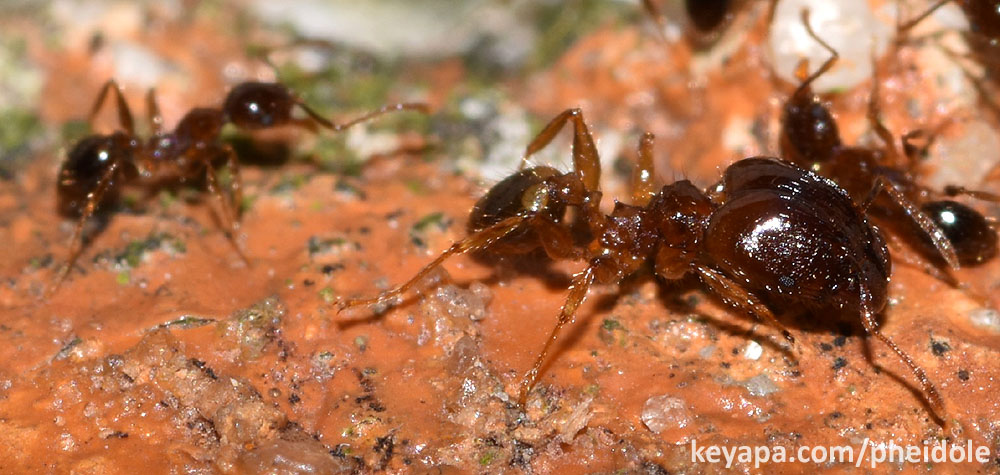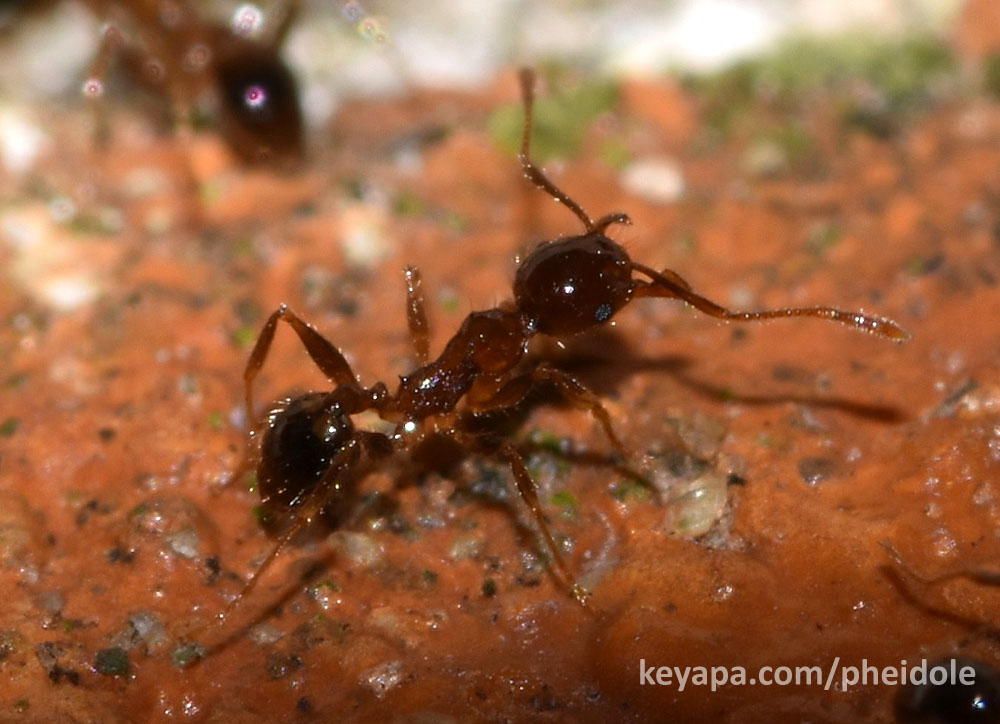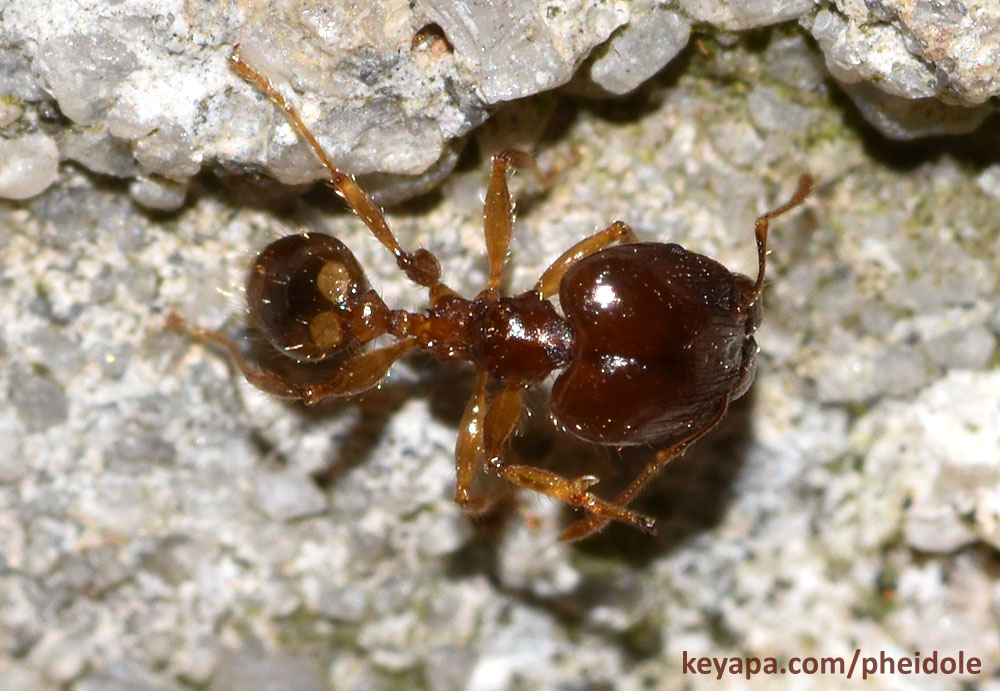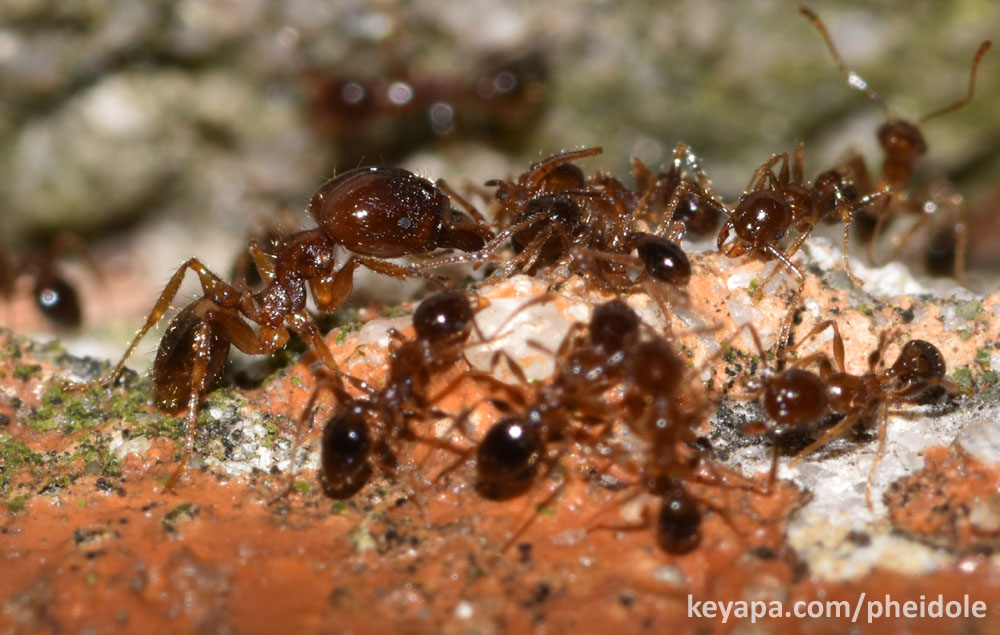
I discovered a Pheidole megacephala cluster in a gated community here in Central Florida. It’s centered around the community’s town center, and I have been busy the last few days figuring out the boundaries of the colony.
The species is unicolonial, and unlike most other ant species, it can therefore persist in a single location for relatively long periods of time. For example, one cluster in the Marie Selby Botanical Gardens in Sarasota, FL has been in that location for at least 30 years (Antweb,2020; Sunjian, 2020).
This ability of the species to persist makes it ideal for long term behavioral and ecological studies, and one of the first steps to studying a cluster would be to map the boundaries of the supercolony.

As a first step, I simply walked around scanning for the typical long foraging lines of the species during early morning and late afternoons, which would give an idea of the busier parts of their territory. This is because P. megacephala typically have lines that endure for long periods of time, and are invariably present every day that I check on them.
This allowed me to determine after a couple of days that the core area seemed to be an irregular polygon that encompassed around 1.3 ha. However, within this area (which includes ponds and man made structures), P, megacepahala is by no means the only ant species present, and I am now in the process of mapping out the fine details of the territory.

I decided I would do this by placing cookie baits along points in the area, such as the base of trees (mostly palms), and then checking back on them to see which species are attracted to the baits.
Nearby ants typically find the baits within a few minutes, or at most an hour, and by doing this early this morning I found the fine boundary line of the P. megacephala cluster along one side. Species that I found along that boundary included Pheidole obscurithorax, a putative Pheidole dentigula, a Cyphomyrmex sp, and one small Solenopsis invicta (?) colony. I’ll be using the same technique for other sides of the area in the next few days.
In a few spots inside the mapped area, I noticed that no ants showed up at the baits even after a day or so, and this may indicate that this is within the P. megacephala boundaries. The species has a tendency to extirpate almost all other ants within its territory, and the absence of any ants on baits might be one way of indirectly determining whether P. megacephala has taken control of the location. Unfortunately, cookie baits and even peanut butter baits are sometimes not very attractive to P. megacephala.
Finally, I’ll be flying my DJI Mini 2 drone above the entire area so I can create high res maps of it, and then labeling all the point where I see the presence of P. megacephala workers, as well as the boundaries as demarcated by the presence of other ant species.
I will then use the map over time to see how the cluster expands or contracts as time passes.

Literature Cited:
Antweb, (accessed 2020). Specimens ARTHARCH00043035 and JTLC000014106.
https://www.antweb.org/browse.do?
genus=pheidole&species=megacephala&rank=species&project=worldants
Sunjian, A (2020). On the longevity of Pheidole megacephala Colony Clusters. The Pm Compendium (PMC). https://pheidolemegacephala.blogspot.com/2020/03/on-longevity-of-pheidole-megacephala.html
Leave a Reply